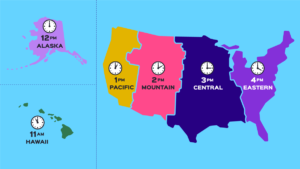How Do I Put Out a Fire

Fires can be scary and dangerous, but knowing what to do when faced with one can make all the difference. It’s important to understand how to safely put out a fire, so you can protect yourself and those around you. In this guide, we will explain step by step how to handle different types of fires. Don’t worry, we’ll keep things simple, so even a five-year-old could understand! So, how do I put out a fire? Let’s find out.
What Is Fire and Why Does It Burn?
Before we learn how to put out a fire, it’s important to know what fire actually is. Fire happens when three things come together: heat, fuel (like wood, paper, or gas), and oxygen from the air. These three things make up the “fire triangle.” If you remove just one part of this triangle, the fire will go out. Sounds easy, right? But it depends on the type of fire you’re dealing with. You can also read this: How Do I Put Out a Fire
Types of Fires and How to Handle Them
Not all fires are the same. Some are small and easy to handle, while others can spread quickly. Let’s take a look at the different types of fires and the best way to put them out.
Small Fires in the Kitchen
Kitchen fires are one of the most common types of fires. They usually happen when cooking oil or grease gets too hot and catches fire. So, how do I put out a fire in the kitchen? Never use water! Water can make the fire worse. Instead, grab a lid and carefully place it over the burning pan. This will cut off the oxygen and stop the fire. If you have baking soda nearby, you can throw that onto the fire to help put it out. Always keep a fire extinguisher in the kitchen just in case the fire spreads.
Electrical Fires
Electrical fires can be very dangerous because they happen when wires or electrical devices get too hot and catch fire. If you ever see sparks or flames coming from an electrical outlet or device, don’t panic. The first thing you need to do is turn off the power. Unplug the device if it’s safe to do so, or flip the switch on your fuse box to cut off the electricity. Do not pour water on an electrical fire because water conducts electricity and could shock you. If the fire is small, you can use a fire extinguisher rated for electrical fires (look for Class C on the label).
Paper or Wood Fires
Paper or wood fires are the kind of fires you might find in a fireplace or outside in a campfire. These are easier to put out than electrical or grease fires. The best way to put out a small paper or wood fire is to pour water over it. If the fire is outdoors, you can also use dirt or sand to smother the flames. Always make sure the fire is completely out before you walk away, as embers can reignite if left unattended.
Gas Fires
Gas fires can happen if there’s a leak from a gas stove, heater, or even a car engine. These fires are dangerous because gas spreads quickly. If you suspect a gas leak and see a fire, leave the area immediately and call emergency services. Never try to put out a gas fire on your own unless you have a fire extinguisher rated for gas fires (Class B). The best thing to do is get to safety and wait for the professionals to handle it.
Using a Fire Extinguisher: Step by Step
If you ever need to use a fire extinguisher, it’s important to know how it works. You don’t want to figure it out while a fire is spreading! Here’s a simple way to remember how to use a fire extinguisher: PASS.
- P: Pull the pin at the top of the extinguisher.
- A: Aim the nozzle at the base of the fire (not the flames).
- S: Squeeze the handle to release the extinguishing agent.
- S: Sweep the nozzle from side to side until the fire is out.
Fire extinguishers come with labels that tell you what types of fires they can be used on. Make sure you have the right one for the situation. Class A is for wood and paper, Class B is for liquids and gases, and Class C is for electrical fires. Some fire extinguishers are labeled ABC, which means they can handle all three types of fires.
When to Call for Help
Sometimes, a fire can get out of control quickly, and you may not be able to put it out on your own. If the fire is spreading fast, is taller than you, or if the room is filling with smoke, it’s time to call for help. Get everyone out of the house and call the fire department. Your safety is the most important thing, so don’t take risks.
Fire Safety at Home: Prevention Tips
Of course, the best way to deal with a fire is to prevent it from happening in the first place. Here are some easy fire safety tips to keep your home and family safe.
- Check your smoke alarms: Make sure you have working smoke alarms in every room. Test them once a month to make sure they’re working.
- Be careful with candles: Never leave a candle burning unattended. Always blow them out before leaving the room.
- Keep flammable items away from heat: Things like curtains, papers, and clothes can easily catch fire, so keep them away from stoves, heaters, and candles.
- Don’t overload electrical outlets: Plugging too many things into one outlet can cause it to overheat and catch fire.
- Have a fire escape plan: Make sure everyone in your house knows how to get out safely in case of a fire. Practice your escape plan regularly.
What to Do After the Fire is Out
Once you’ve put out the fire, take a deep breath. But your work isn’t over yet. You need to make sure the fire doesn’t reignite. Check the area where the fire started for any signs of heat or smoke. If you have a fire extinguisher, give the area another quick spray to be safe. If the fire happened in your kitchen or near any electrical devices, get a professional to inspect them before using them again.
Final Thoughts
So, how do I put out a fire? The answer depends on the type of fire you’re dealing with. Always stay calm and remember the basic steps for putting out fires: remove heat, fuel, or oxygen. For small fires, you can often handle them yourself with the right tools, like a fire extinguisher or a pan lid. But for bigger or more dangerous fires, call the fire department and get to safety as soon as possible.
Fire safety is everyone’s responsibility. With the tips in this guide, you now know what to do if a fire ever starts. Stay safe, and remember to always be prepared.








